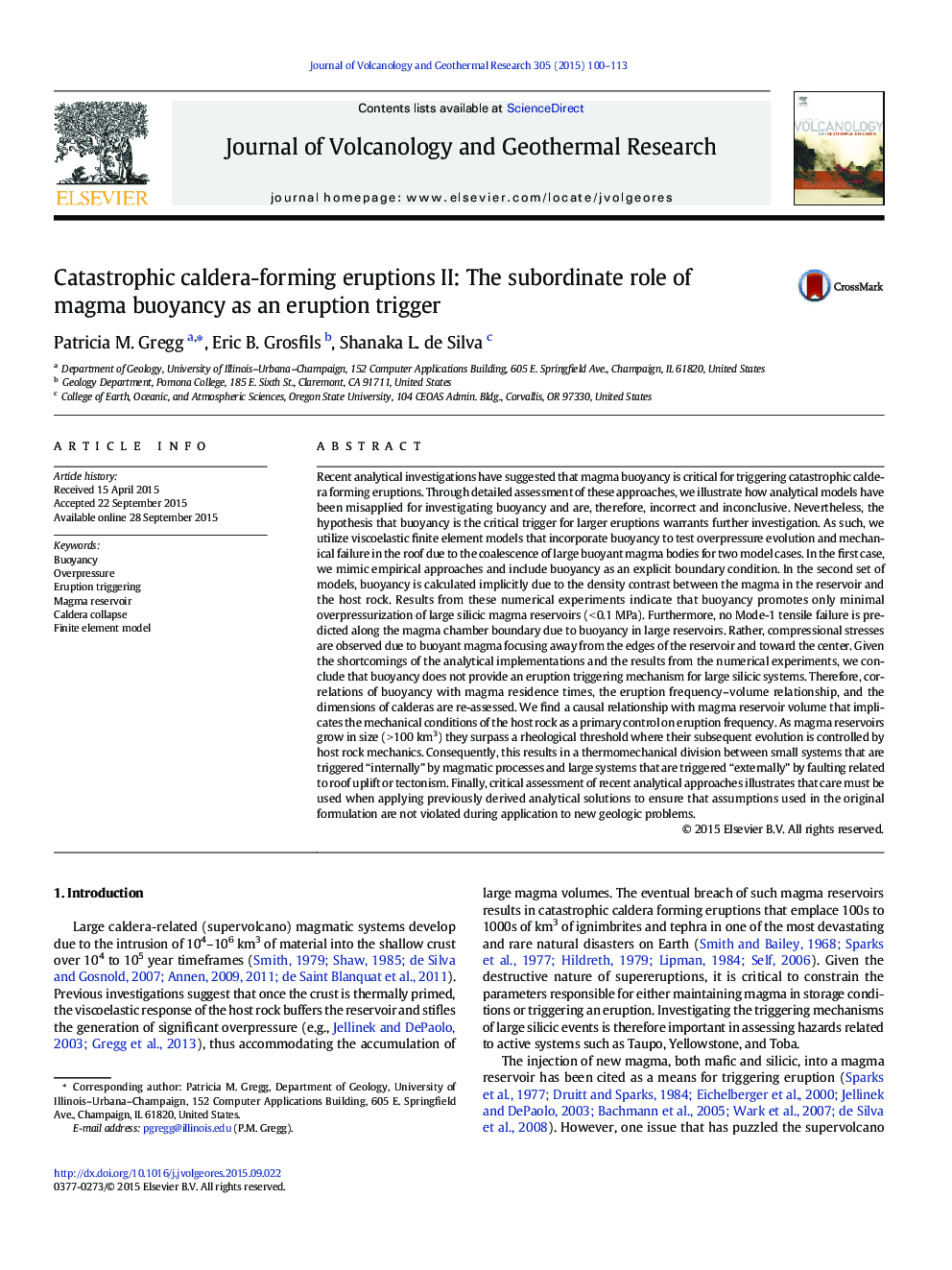| کد مقاله | کد نشریه | سال انتشار | مقاله انگلیسی | نسخه تمام متن |
|---|---|---|---|---|
| 4712813 | 1638317 | 2015 | 14 صفحه PDF | دانلود رایگان |

• Analytical approaches of buoyancy eruption triggers are shown to be incorrect.
• New numerical models are developed to test buoyancy as an eruption trigger.
• Results indicate magma buoyancy does not trigger large caldera eruptions.
• Results indicate a relationship between reservoir volume and host rock strength.
• Host rock mechanics are a primary control on triggering caldera eruptions.
Recent analytical investigations have suggested that magma buoyancy is critical for triggering catastrophic caldera forming eruptions. Through detailed assessment of these approaches, we illustrate how analytical models have been misapplied for investigating buoyancy and are, therefore, incorrect and inconclusive. Nevertheless, the hypothesis that buoyancy is the critical trigger for larger eruptions warrants further investigation. As such, we utilize viscoelastic finite element models that incorporate buoyancy to test overpressure evolution and mechanical failure in the roof due to the coalescence of large buoyant magma bodies for two model cases. In the first case, we mimic empirical approaches and include buoyancy as an explicit boundary condition. In the second set of models, buoyancy is calculated implicitly due to the density contrast between the magma in the reservoir and the host rock. Results from these numerical experiments indicate that buoyancy promotes only minimal overpressurization of large silicic magma reservoirs (< 0.1 MPa). Furthermore, no Mode-1 tensile failure is predicted along the magma chamber boundary due to buoyancy in large reservoirs. Rather, compressional stresses are observed due to buoyant magma focusing away from the edges of the reservoir and toward the center. Given the shortcomings of the analytical implementations and the results from the numerical experiments, we conclude that buoyancy does not provide an eruption triggering mechanism for large silicic systems. Therefore, correlations of buoyancy with magma residence times, the eruption frequency–volume relationship, and the dimensions of calderas are re-assessed. We find a causal relationship with magma reservoir volume that implicates the mechanical conditions of the host rock as a primary control on eruption frequency. As magma reservoirs grow in size (> 100 km3) they surpass a rheological threshold where their subsequent evolution is controlled by host rock mechanics. Consequently, this results in a thermomechanical division between small systems that are triggered “internally” by magmatic processes and large systems that are triggered “externally” by faulting related to roof uplift or tectonism. Finally, critical assessment of recent analytical approaches illustrates that care must be used when applying previously derived analytical solutions to ensure that assumptions used in the original formulation are not violated during application to new geologic problems.
Journal: Journal of Volcanology and Geothermal Research - Volume 305, 15 October 2015, Pages 100–113